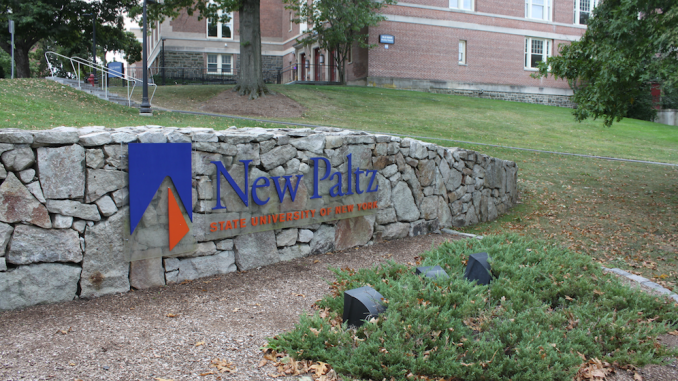
SUNY New Paltz is facing an estimated budget deficit of $2 million.
According to Vice President for Administration and Finance Michele Halstead, the deficit stems from increased expenditure needs, such as minimum wage increase and lack of new revenue, as SUNY did not raise tuition and there has been no additional state taxpayer support.
Another contributing factor is the drop in graduate enrollment in certain programs, such as education, consistent with national trends. Additionally, while the state funds construction of new academic buildings, the campus is responsible for the cost of operating the new building coming online.
Halstead said that long-term solutions for the deficit must be developed.
“The college has a reserve fund that will bridge the gap this year, but we must adjust our economy going forward,” she said. “Outside of increases in state support or tuition, the campus must look to increase revenue and at the same time look to see where we can reduce expenditures.”
The college does not have the ability to raise tuition, so unless there is a change at the state level, tuition costs at SUNY New Paltz will not be impacted. Additionally, room and board budgets are separate from the budget impacted by the current deficit, according to Halstead.
It is unclear at this time whether this deficit will result in staff or program cuts.
“Decisions have not yet been made, but the college always prioritizes non-personnel reductions over cutting staff,” Halstead said.
Halstead said that the 2017-18 fiscal year budget, which begins July 1, 2017, will not be finalized until spring 2017, after the state budget is finalized.
“It is important that our approach to a long-term solution be thoughtful,” she said regarding the school’s timeline for rectifying the deficit. “As such, we view this as an ongoing process throughout the year.”
The college has faced similar deficits in the past, the most significant being $6 million in 2008-09 and another $6 million in 2010-11. According to Halstead, the campus operating budget comprises tuition and state taxpayer support and the latter declined in 2008-09, 2009-10, 2010-11 and 2011-12, and was essentially flat since 2011-12.
“During the last five years, we’ve invested tuition increases in expanding services and opportunities for students, but there was no such increase this year, contributing to our budgetary challenge,” she said. “The percentage of state taxpayer support continues to decline, so that now for every dollar we have to spend in our core budget, only 23 cents comes from state support and 77 cents comes from tuition.”
Halstead added that an increase in either state taxpayer support or tuition would greatly improve the college’s budget situation.
The college has managed its budget deficits in the past and Halstead believes it is capable of continuing to do so. During the 2008-09 and 2010-11 deficits, the campus took advantage of an early retirement incentive, which created vacancies in a variety of positions across campus, which allowed for the college to realign its work force to meet its needs. The college was also able to increase revenue and reduce expenditures during those academic years.
“Over the course of my 26 years at SUNY New Paltz, I’ve seen the campus face and overcome many financial challenges,” Halstead said. “Through this budget process, I am confident that we will position the institution for continuing success.”
